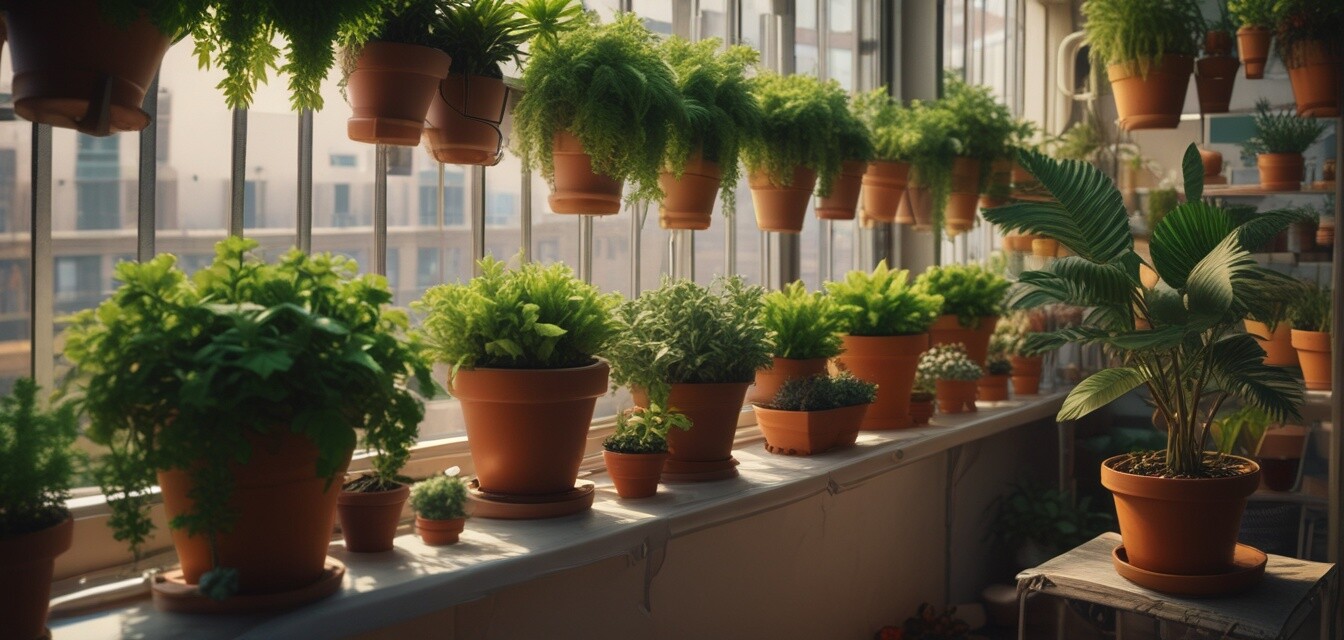
Creating a Care Schedule for Your Houseplants
- Establishing a care schedule is essential for healthy houseplants.
- Different plants have varying light, water, and nutrient needs.
- Using a calendar or app can help you keep consistent care.
- Regular monitoring and adjustments to care can enhance plant growth.
- Consider factors like sunlight exposure and local climate for optimal results.
Creating and maintaining a care schedule for your houseplants can significantly enhance their growth and vitality, especially in an urban balcony garden. With limited space and specific environmental conditions, it's crucial to establish a practical routine tailored to each type of plant. This article will guide you through the steps to create an effective care schedule, ensuring your plants thrive.
Understanding your houseplants' needs
Different types of houseplants have unique needs. Understanding these needs is the first step in creating a care schedule. Here are some common factors to consider:
| Plant Type | Light Requirements | Watering Needs | Fertilization Frequency |
|---|---|---|---|
| Succulents | Full sun | Every 2-3 weeks | Every 4-6 weeks |
| Ferns | Indirect light | Weekly | Every 6-8 weeks |
| Spider Plant | Bright, indirect light | Every 1-2 weeks | Every 4 weeks |
| Pothos | Low to bright indirect light | Every 1-2 weeks | Every 6 weeks |
Creating your care schedule
- Identify your plants: List all the houseplants you currently have.
- Research care requirements: Determine the specific needs of each plant.
- Establish a watering routine: Based on the needs, set a watering schedule that works for you.
- Create a fertilization plan: Decide when and how often to fertilize each plant.
- Monitor growth and health: Regularly check for signs of growth and any issues that may arise.
Tips for success
- Use a calendar or app to track your care schedule. Options like Google Calendar can send you reminders.
- Keep an eye on weather changes that can affect light exposure and watering needs.
- Adjust your schedule seasonally, as many plants have varying needs throughout the year.
- Integrate your care schedule with other balcony gardening activities for efficiency.
- Consider creating a growth log to document plant health and any changes made to care.
Common challenges and solutions
Even with a solid care schedule, challenges may arise. Here are some common issues and ways to solve them:
| Challenge | Solution |
|---|---|
| Overwatering | Adjust watering frequency; ensure proper drainage. |
| Underwatering | Increase watering routine; check for soil dryness. |
| Insufficient light | Move plants closer to light sources or consider supplemental lighting. |
| Pests | Regularly inspect plants; use organic pest control methods. |
Conclusion
Establishing a care schedule for your houseplants not only helps them thrive but also enriches your urban balcony experience. By understanding their unique needs and regularly monitoring their growth, you create an inviting green space in your home. Don't forget to explore our other resources on gardening tips for more guidance, or check out our potted plants section for ideal selections suited for your balcony garden!
Pros
- Helps ensure healthy growth
- Encourages a more organized gardening routine
- Allows you to learn more about your plants’ needs
Cons
- Requires consistent effort and monitoring
- May need adjustments based on seasonal changes
- Can be challenging for beginners to establish